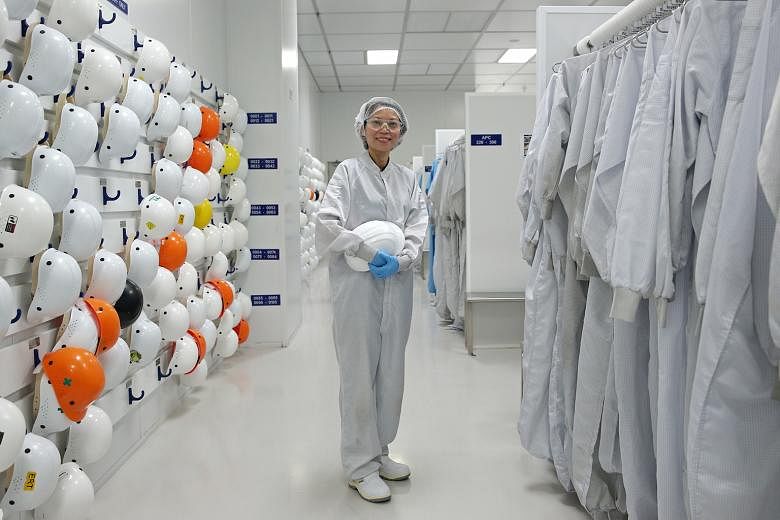As you upgrade to the latest smartphone because it is slimmer, has more storage and a better camera, it may surprise you these features are possible because of equipment made here in Singapore, at Changi North Industrial Park.
Nasdaq-listed United States semiconductor player Applied Materials, together with suppliers, makes about one-third of the group's output in Singapore, as a significant number of customers are now in Asia. Many such multinationals have a base in Singapore to be closer to a growing market.
With a single machine that makes wafers, from which chips are made, going for $5.5 million a pop, some serious engineering goes into it.
Such a machine - the size of a small lorry - could have more than 8,000 components and over 1,700 configurations. The latter are to meet the demands of customers like smartphone makers. The configurations enable the machine to generate the right type of chip - such as memory chips in hard drives, or chips for wearable devices like fitness trackers, or the processors in mobile phones.
Applied Materials' 320,000 sq ft facility scores on several counts, says regional president (SEA) Russell Tham. When it opened in 2010, the immediate priority of the team he led was to ensure production quality was up to scratch. Subsequently, the team took the initiative to see how the facility could be made more productive.
This success is in no small part due to the team leader on the floor, Ms Yvonne Lee, 44, who is responsible for all the chemical mechanical planarization equipment that is manufactured in Singapore as well as in the US. As the female boss of a 180-strong team, she disproves the notion that manufacturing is only for the men.
Under her watch, the facility is now even more productive than the group's other equipment-making facility in its home town of Texas. Simple but significant changes were made over the years.
Picture a row of workers, each fixing a component, as it moves down a conveyor belt.Here, instead of the component moving, it is the worker who moves. A worker now stands in front of the workbench. All items needed for this part of the process are put in a box. The worker performs the step before moving to the next workbench.
With customers forking out millions of dollars for the machines, they can be demanding, says Ms Lee. The challenge is not just for a process to work smoothly once, but thousands of times. Can each wafer be exactly the same thickness and smoothness? Designing a machine that consistently delivers the same quality is the name of the game. And that's why the production floor has a separate area where workers work on production issues they encounter. Often, it is identifying the problem correctly, rather than the symptom, that is the challenge, says Ms Lee.
Mr Tham also notes that the company is energy efficient, with an electricity bill of about $1 million a year, pretty small beer for a factory of its size.
Mr Tham adds that there is a strong Singaporean core of workers at the facility, totalling 64 per cent. Dispelling perceptions that Singaporeans seldom land the top jobs, many of the posts on offer here are global in nature, such as global product manager for manufacturing or sales.
Recently, another advance was made. The Singapore operations now conduct R&D in the area of wafer packaging - how to get more chips in a smaller space, for example - for Applied Materials worldwide.
Mr Tham says: "We established the credibility of Singapore with the (head office) and we have now evolved such that we do global research and development here, in close partnership with A*Star. And this is how manufacturing brings additional high-end engineering technology jobs to Singapore."


